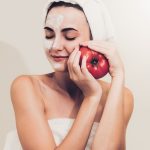Introduction: The Link Between Nutrition and Eye Appearance
When it comes to looking your best, the skin around your eyes can say a lot about your overall health. You might be surprised at just how much your daily diet and nutrition choices show up right under your eyes—literally. Whether you’re dealing with puffiness after a salty dinner, dark circles from too many late-night snacks, or noticing more fine lines as the years go by, what you eat matters. In this section, we’ll break down how your eating habits can affect the appearance of your eye area and why making smart nutrition choices could help you look more refreshed and awake.
How Your Diet Shows Up Around Your Eyes
The delicate skin under your eyes is thinner than most parts of your face, which means it’s often the first place you’ll notice changes caused by poor nutrition or dehydration. Here’s a quick overview of common eye area concerns and how they connect to what’s on your plate:
| Eye Area Concern | Possible Nutrition Connection |
|---|---|
| Puffiness | High sodium intake (salty foods), dehydration, alcohol consumption |
| Dark Circles | Lack of iron or vitamin B12, not enough hydration, excessive caffeine |
| Fine Lines & Wrinkles | Low antioxidants (from fruits & veggies), high sugar diet, unhealthy fats |
| Dullness & Dryness | Not enough healthy fats (like omega-3s), lack of vitamins A, C, E |
Why Does This Happen?
Your body is constantly sending you signals about what it needs—or what it’s missing. When you don’t get enough water or vital nutrients, the thin skin around your eyes is one of the first places to show signs of stress. For example, eating too much salt makes your body hold onto water, which can lead to morning puffiness. Skipping out on leafy greens or citrus? You might notice more shadows or tired-looking eyes because these foods are packed with vitamins that help brighten and protect your skin.
The Real-Life Impact: It’s Not Just Genetics
If you’ve always blamed “bad genes” for tired-looking eyes, it might be time to take a closer look at what you’re eating day in and day out. Sure, genetics play a part—but so does that extra bag of chips or skipping breakfast. In the next sections, we’ll dive deeper into specific nutrients and foods that can help keep your eye area looking its best.
2. Key Nutrients for Bright, Healthy Eyes
The Power of Nutrition for Your Eye Area
If you want to keep the skin around your eyes looking fresh and vibrant, what you eat can make a real difference. The right nutrients support skin health, reduce puffiness, help with dark circles, and give you that healthy glow people notice. Let’s break down some of the most important vitamins and nutrients for brighter, healthier-looking eyes.
Essential Nutrients for Eye Area Appearance
| Nutrient | Main Food Sources | How It Helps Your Eye Area |
|---|---|---|
| Vitamin C | Oranges, strawberries, bell peppers, broccoli | Boosts collagen production for firmer skin; fights free radicals that cause dullness and wrinkles |
| Vitamin E | Almonds, sunflower seeds, spinach, avocados | Protects delicate skin from sun damage; helps prevent dryness and fine lines |
| Omega-3 Fatty Acids | Salmon, walnuts, chia seeds, flaxseeds | Reduces inflammation and puffiness; keeps skin hydrated and smooth |
| Antioxidants (like lutein & zeaxanthin) | Kale, spinach, corn, eggs | Filters blue light; supports overall eye health and keeps under-eye skin looking youthful |
| Zinc | Oysters, beef, chickpeas, pumpkin seeds | Aids in cell repair and renewal; can help minimize dark circles under your eyes |
| Water (Hydration) | Plain water, herbal teas, water-rich fruits (cucumbers, watermelon) | Keeps skin plump and reduces appearance of fine lines around the eyes |
Simple Ways to Get These Nutrients Daily
- Add a handful of berries or orange slices to your breakfast for a Vitamin C boost.
- Snack on almonds or add avocado to salads for extra Vitamin E.
- Toss a few walnuts into your oatmeal or smoothie for Omega-3s.
- Sneak spinach into omelets or smoothies for powerful antioxidants.
- Drink plenty of water throughout the day—your skin will thank you!
The Bottom Line: Everyday Choices Matter
You don’t need fancy supplements or expensive products to care for the skin around your eyes. By choosing nutrient-rich foods at each meal and staying hydrated, you’re giving your eye area the best chance to look bright and healthy every single day.

3. Foods to Include and Avoid for Eye-Area Radiance
Everyday Foods That Rejuvenate Your Under-Eye Area
What you eat truly shows up on your face—especially around the eyes, where skin is thin and sensitive. If you’re hoping for brighter, less puffy under-eyes, stocking your kitchen with the right foods can make a visible difference. Here are some eye-area-friendly staples you’ll find at any grocery store in America:
| Food | Why It Helps |
|---|---|
| Spinach & Kale | Packed with lutein and vitamin K, these leafy greens help reduce inflammation and brighten skin. |
| Citrus Fruits (Oranges, Grapefruit) | Rich in vitamin C, they support collagen production for firmer, smoother skin. |
| Salmon & Fatty Fish | Loaded with omega-3 fatty acids that fight puffiness and keep skin hydrated. |
| Sweet Potatoes & Carrots | Full of beta-carotene, which the body converts into vitamin A for skin renewal and glow. |
| Berries (Blueberries, Strawberries) | High in antioxidants to protect against dullness and signs of fatigue. |
| Cucumbers | Naturally hydrating and cooling—great as a snack or added to water. |
| Almonds & Walnuts | Contain vitamin E and healthy fats to nourish delicate under-eye skin. |
| Green Tea | A powerhouse of antioxidants that help reduce puffiness and dark circles. |
Common Foods and Habits to Limit for Brighter Eyes
Let’s be real: American diets are often heavy on things that can leave your under-eyes looking tired or swollen. Here’s what to watch out for if you want to avoid dullness or puffiness:
- Sodium-heavy foods: Processed snacks, canned soups, frozen dinners, and fast food can all cause water retention (hello, puffy eyes!). Try swapping in fresh options when you can.
- Sugary treats: Sodas, candy bars, donuts—these spike blood sugar and contribute to inflammation, which means more bags under your eyes.
- Alcohol: Cocktails might be fun, but drinking dehydrates your skin, making dark circles look worse. If you drink, balance it out with lots of water.
- Caffeine overload: Coffee is an American staple but too much can mess with sleep quality—leading to tired-looking eyes. Moderation is key!
- Lack of hydration: Not drinking enough water? Your under-eyes will show it first. Aim for at least 8 cups a day.
- Lack of fruits & veggies: Skipping fresh produce means missing out on key vitamins and antioxidants that keep your eye area looking healthy.
Your Daily Food Choices Matter
If you want real results around your eyes, try making small swaps every day—like choosing berries over cookies or sipping green tea instead of another soda. You don’t need fancy supplements; just a trip down the produce aisle can get you started on the path to fresher-looking eyes.
4. The Role of Hydration and Its Impact on the Eye Area
When it comes to keeping your under-eye area looking fresh and awake, hydration is a game changer. In the hustle and bustle of daily American life—think juggling work, family, and social commitments—its easy to overlook something as simple as drinking enough water. But if you’re struggling with dark circles or puffiness, staying hydrated could be one of the easiest fixes.
Why Hydration Matters for Your Eyes
Your body is made up mostly of water, and your skin—especially around your eyes—shows it when you’re running low. Dehydration can make blood vessels under your eyes more noticeable, leading to darker circles. It can also cause fluid retention, making puffiness worse. Simply put: when you don’t drink enough water, your eye area is often the first place it shows.
Real-World Tips for Busy Americans
We get it—life moves fast. Here are some hydration strategies that fit right into a busy US lifestyle:
| Tip | How to Make It Work |
|---|---|
| Keep a Reusable Water Bottle | Pick a bottle you love and take it everywhere—from your desk to the gym or even while running errands. Refillable bottles are eco-friendly too! |
| Set Water Reminders on Your Phone | Use apps or phone alarms to nudge you throughout the day. Even a quick sip every hour adds up. |
| Add Flavor Naturally | If plain water isn’t your thing, add lemon, cucumber, or berries to keep things interesting without extra sugar. |
| Swap Soda for Sparkling Water | Craving fizz? Reach for seltzer or sparkling water instead of sugary sodas to hydrate without empty calories. |
| Eat Hydrating Foods | Foods like watermelon, celery, cucumbers, and oranges help boost hydration—and make easy snacks for on-the-go. |
The Bottom Line: Hydration Shows on Your Face
You don’t have to overhaul your whole diet to see results in your eye area—a few mindful tweaks can make a real difference. Whether you’re hustling at work or shuttling kids between activities, prioritizing hydration is one of the simplest ways to look (and feel) more refreshed every day.
5. Diet, Allergies, and Their Influence on the Under-Eye Area
If you wake up with puffy eyes or dark circles, your diet might be to blame more than you think. In the U.S., a lot of our daily foods—think takeout, snacks, and even some “healthy” options—can play a big role in how our under-eye area looks. Here’s how food sensitivities, allergies, and common dietary triggers affect your appearance.
How Food Sensitivities and Allergies Show Up Under Your Eyes
Many Americans have some level of food sensitivity or allergy, sometimes without realizing it. When your body reacts to something like dairy, gluten, or nuts, it can trigger inflammation. This often appears as puffiness or dark shadows under your eyes. If you notice that your eyes look worse after certain meals, it could be worth tracking what you eat and how your skin reacts.
Common Dietary Triggers That Can Make Under-Eye Problems Worse
| Trigger Food/Ingredient | What It Does | Common Examples |
|---|---|---|
| Salt (Sodium) | Causes water retention, leads to puffiness | Chips, canned soups, fast food |
| Processed Foods | Packed with preservatives; can increase inflammation | Deli meats, frozen dinners, packaged snacks |
| Dairy Products | Can cause allergic reactions in sensitive people; shows up as bags or dark circles | Milk, cheese, ice cream |
| Sugar | Makes inflammation worse; can thin the delicate under-eye skin over time | Soda, candy, pastries |
| Alcohol | Dehydrates skin and makes blood vessels more visible under the eyes | Wine, beer, cocktails |
What Can You Do?
If you suspect that certain foods are making your under-eye area look worse, try keeping a simple food diary. Write down what you eat and note any days where puffiness or dark circles get noticeably worse. Also consider swapping out high-salt snacks for fresh fruit or veggies and drinking more water. Sometimes just cutting back on processed foods can make a real difference.
6. Real-Life Tips: Eating for Brighter Eyes in Everyday American Life
Let’s be real—most Americans are always on the go, juggling work, family, and social life. But even with a packed schedule, you can still support the appearance of your eye area through smart food choices. Here are some easy-to-follow tips and snack swaps to keep your eyes looking bright and refreshed, no matter how busy you get.
Grab-and-Go Snack Swaps
| Instead of This… | Try This! | Why It Helps Your Eye Area |
|---|---|---|
| Potato chips or pretzels | Carrot sticks with hummus | Carrots are loaded with beta-carotene, supporting healthy skin around your eyes. |
| Candy bar | A small handful of mixed nuts (almonds, walnuts, pistachios) | Nuts have vitamin E and healthy fats that help reduce puffiness and dryness. |
| Sugary soda | Iced green tea or flavored sparkling water (no added sugar) | Green tea is full of antioxidants that may help fight under-eye circles. |
| Cream cheese bagel | Whole-grain toast with avocado slices | Avocados offer vitamin C and E for skin elasticity and hydration. |
Quick Meal Ideas for Busy Days
- Breakfast: Overnight oats with blueberries and chia seeds—fiber plus antioxidants in a jar you can grab as you run out the door.
- Lunch: Turkey wrap with spinach, tomatoes, and bell peppers—lean protein plus colorful veggies that nourish your skin.
- Dinner: Grilled salmon (or canned tuna) with a side salad tossed in olive oil—omega-3s help fight inflammation and keep under-eye bags at bay.
- Dessert: Greek yogurt parfait with strawberries and a sprinkle of sunflower seeds—for a sweet treat that won’t spike your sugar levels or cause puffiness.
Smart Hydration Hacks
- Tote a refillable water bottle everywhere—it’s the cheapest beauty trick around. Aim for at least eight cups a day to help prevent dark circles from dehydration.
- Add lemon or cucumber slices for flavor if plain water gets boring. Both add extra antioxidants without any hassle.
- If coffee is non-negotiable (we get it!), try alternating every cup of coffee with a glass of water to balance things out.
Treats That Won’t Mess Up Your Skin
You don’t have to give up all the good stuff! Enjoy dark chocolate (at least 70% cocoa) instead of milk chocolate for a hit of flavonoids, which can boost circulation around your eyes. And if you’re reaching for ice cream, try frozen banana “nice cream” blended with peanut butter—it’s creamy, satisfying, and adds potassium for less puffiness.
7. Conclusion: Long-Term Benefits of a Nutrient-Rich Diet for Eye Health
Making smart food choices does more than just help you feel good in the moment—it has a real impact on how your eye area looks and how healthy your eyes stay as you age. When you fill your plate with the right nutrients, you’re not only fighting off puffiness and dark circles, but also supporting your overall well-being. Let’s break down the lasting benefits you can expect from sticking to a nutrient-rich diet:
Key Benefits of a Nutrient-Packed Diet for Your Eyes
| Nutrient | Main Food Sources | How It Helps Your Eye Area |
|---|---|---|
| Vitamin C | Citrus fruits, strawberries, bell peppers | Boosts collagen for firmer skin around the eyes |
| Vitamin E | Nuts, seeds, spinach | Fights oxidative stress that can lead to tired-looking eyes |
| Omega-3 Fatty Acids | Salmon, walnuts, flaxseeds | Keeps skin hydrated and helps reduce puffiness |
| Zinc | Pumpkin seeds, chickpeas, beef | Supports skin repair and reduces inflammation under eyes |
| Lutein & Zeaxanthin | Kale, spinach, corn, eggs | Protects delicate eye tissues from blue light damage |
| Water (Hydration) | Plain water, fruits like watermelon or cucumber | Keeps under-eye area plump and lessens dark circles from dehydration |
The Big Picture: Why Consistency Matters
No single meal will magically erase years of poor habits or instantly make your eyes look bright and refreshed. But when you consistently choose foods that fuel your body with vitamins, minerals, healthy fats, and plenty of water, you’ll notice:
- Smoother, brighter skin around the eyes over time
- A reduction in puffiness and dark circles
- Less irritation and dryness
- Overall improved energy and wellness (which shows in your face!)
Small Changes That Go a Long Way
You don’t have to overhaul your entire diet overnight. Even small tweaks—like adding an extra serving of leafy greens or swapping a sugary snack for nuts—can add up to real improvements in how your eye area looks and feels. Plus, these changes support other parts of your health too.


